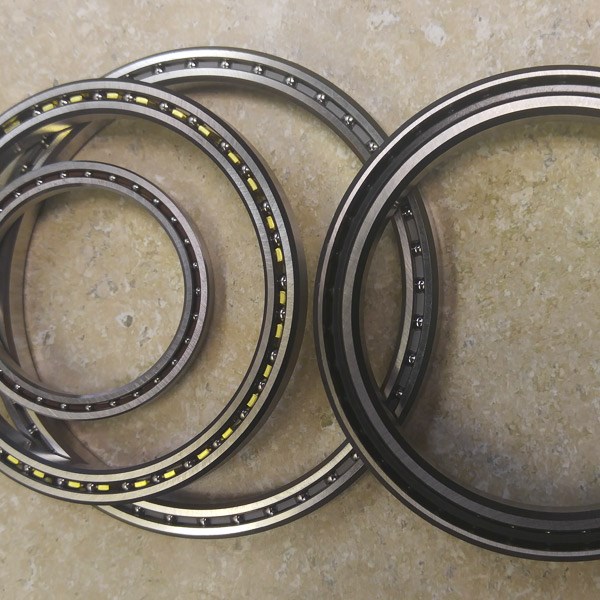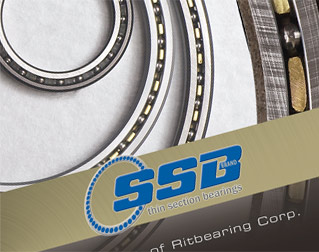Thin section bearings are used in a wide variety of applications, and each of those applications have specific requirements. These potential differences make some thin section bearing products a better option than others. When it comes to thin section bearings, there are three different types to consider:
- Type A
- Type C
- Type X
Which style is right for your needs? That depends on your application and the types of loads that your thin section bearings will need to manage.
Type A – Angular Contact Thin Section Bearings
Angular contact-type thin section bearings are designed to thrive in demanding applications with high axial loads. While single A-type thin section bearings typically wouldn’t be recommended to support moment or reverse axial loads, duplex pairs can more than easily accommodate such loads.
Load Capabilities
- Radial – Good
- Axial – Excellent
- Moment – Poor for single bearings, excellent for paired bearings
- Reversing axial – Poor for single bearings, excellent for paired bearings
- Combined radial thrust – Good
Type C – Radial Ball Thin Section Bearings
As you may expect, radial ball-type thin section bearings are a go-to solution for applications with high, demanding radial loads. These parts can also do a good job with slight to modest loads for other load types, although you’ll want to look elsewhere for any designs that call for extreme moment or reversing axial loads.
Load Capabilities
- Radial – Excellent
- Axial – Good
- Moment – Good (for light to moderate loads)
- Reversing axial – Good (for light to moderate loads)
- Combined radial thrust – Good
Type X – Four-Point Contact Thin Section Bearings
Unlike Type A and Type C thin section bearings, the Type X four-point contact thin section bearings are made with a gothic archway that creates four points of contact between the balls in the bearing and the raceway. This design makes this type of bearing an excellent choice for applications that need ample moment or reversing axial loading in a small package. However, it does leave Type X parts less capable of handling various radial loads.
Load Capabilities
- Radial – Poor
- Axial – Good
- Moment – Excellent
- Reversing axial – Excellent
- Combined radial thrust – Poor
Find the Right Bearing Type for Your Applications
The right part can make all the difference in the world. Not only can the right type handle the proper loads and run efficiently, it’ll also save you from replacing parts earlier than expected. Like using the right thin section bearing lubrication, proper part selection can decrease your odds of bearing failure and costly downtime.
In addition, your options extend beyond managing various loads. Type A, C, and X thin section bearings can also be modified in multiple ways, such as fitting parts with different materials for rings and rolling elements or changing the bore size. Your applications need a solution that’s right for them, so it benefits you to find the right thin section bearings for their specific needs.
Know what you need for your applications? Use our online thin section bearing builder to submit a quote for a part based on your specifications. If you’d rather talk to an expert about your options, contact us today to have one of our team members work with you on a part solution for your performance and budgetary needs.







